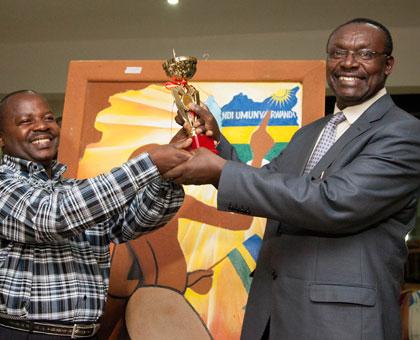One year into the second phase of Economic Development and Poverty Reduction Strategy (EDPRS II), falling commodity prices of major foreign exchange earners on the international market poses challenges to anti-poverty targets.


One year into the second phase of Economic Development and Poverty Reduction Strategy (EDPRS II), falling commodity prices of major foreign exchange earners on the international market poses challenges to anti-poverty targets.
Under its economic transformation vision, one of the priority areas is increasing the external connectivity of Rwanda’s economy to boost exports.
"Comparing the five months period of the year 2014 and those of 2013, there has been a decrease in terms of export revenues,” said Eric Kabayiza, the Director of Planning at the National Agricultural Export Board (NAEB).
"Tea and coffee that are the main agricultural exports have seen a drop in prices on international markets which affected revenues. The drop is more than 10 percent for tea and 33 percent for coffee”.
EDPRS II has three monitoring indicators, including accelerated growth exports. The target for 2015/16 is $2,053.80 million and $3,401.50 million in 2017/18.
Francois Kanimba, the Minister of Trade and Industry, says even mineral exports have declined in value.
"For example, Coltan prices fell by roughly 30 percent. These are common challenges on the global market and I have doubts about achieving targets for this year as the decrease is quite big.
"However, probably, next year will be better as this volatility is often cyclic. I know that coffee, for example, is picking up. This year has not been a good year but maybe next year we will recover,” he said.
The minister noted that all export products were considered when setting the targets up to 2018, but as usual, not everything often goes according to prediction.
The good news, he said, is that even though volatility of prices "is beyond our control, we can plan such that volumes produced are not affected”.
Under EDPRSII, economic transformation is defined as the process of sustained high economic growth during which the fundamentals of an economy change, shifting from a traditional and low productivity agricultural base and a rural labor-force, to a more industrial, diversified and high productivity urban economy.
The National Institute of Statistics’ (NISR) most recent figures show that in the third quarter of 2013, Rwanda’s total trade of $1,509.45 million, imports accounted for$1,336.86 million with exports bringing in only $139.49 million. The country also earned $33.10 million from re-exports.
Niobium and Tin ores fetched $43.95 million; Coffee $17.03 million were Rwanda’s main exports in the third quarter of 2013. In the same quarter of 2012; Coffee raked in $31.38 million.
The tourism industry however, continues to perform well. New figures from the Rwanda Development Board (RDB) indicate that the country raked in $293.6m (about Rwf196.7b) from tourism – the country’s largest foreign exchange earner – up from $281.8m (about Rwf188.8b), in 2012. Earnings from tourism shot up by four per cent last year, while tourist numbers also grew by six per cent in the same period.
The government plans to spend about Rwf10 trillion on EDPRSII in the next five years; focusing on rural development, productivity and youth employment, as well as accountable governance.


